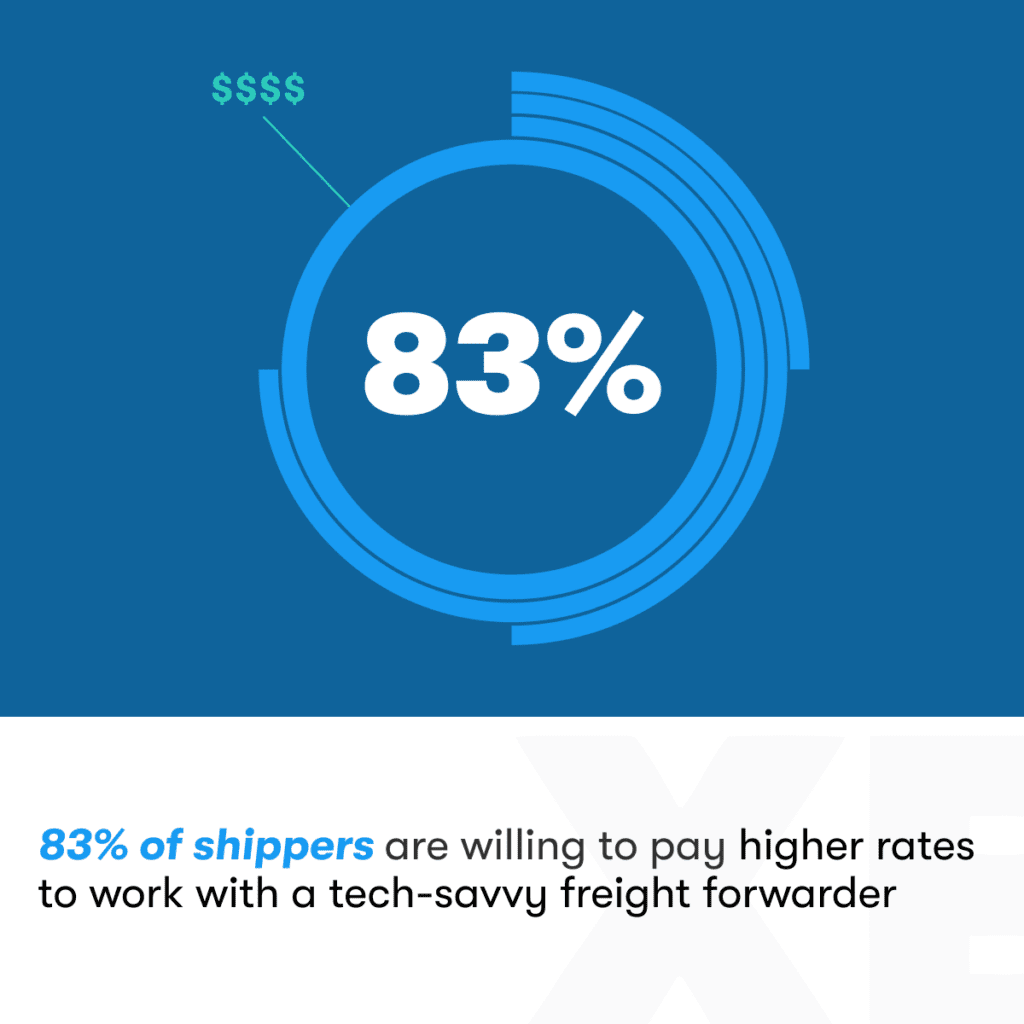In this article
Opposing the trend of slow technology adoption, digital forwarders have disrupted the logistics industry and created a new set of expectations for forwarders. Prioritizing the level of service that customers have throughout their shipment has always been top of mind for freight forwarders, and that hasn’t changed.
What has changed is how this service is delivered.
1. Enhance Your Customer Experience
Customers want immediate answers to “How much will this cost?” and “Where is my shipment?” A forwarder’s customer experience should now include better visibility of shipments, digital document sharing, and quick communication methods in one easy-to-access dashboard online.
Digital freight forwarders are already providing significantly improved digital customer experience compared to what has been historically offered. Leveling up your own customer experience is a sure tactic to increase your value to customers. Descartes and the Air Forwarders Association (AfA) recently conducted a study that found 40% of respondents see “digital customer self-service experience” as the #1 greatest competitive threat. The same study also noted that more than half of respondents labeled digital customer experience as their company’s top priority for IT investments.
Customer experience platforms like Logixboard have proved clear ROI from reduced customer churn, sales enablement, and even improved efficiency within forwarding operations teams. With digital forwarders using customer experience to differentiate and the overall industry shift toward digitization, investing in your digital customer experience offerings is key to maintaining a competitive operation.
2. Shorten Request Response Times
Expediency is the name of the game from the end user, to shippers, to all the players involved in a given supply chain. No one likes waiting for responses, but shippers and BCOs are even less inclined to wait for shipment quoting from their forwarders when there are new competitors offering near to instant answers.
Companies like Freightos and Flexport are using technology to provide speedy responses and quotes for new and returning customers as an additional value add. Forwarders who manually create quotes take an average of 57 hours per quote (from client query to quote provision), according to a survey conducted by Freightos.
Using loaded rates to instantly quote or improving processes to massively decrease request response times will ensure your company is not passed up by shippers. This will impact not only your customers as they gain quick visibility into the fully landed costs of upcoming shipments. Additionally, your own operation’s team will be able to increase the productivity of customer intake with the removal of the large task of manually quoting.
3. Prioritize Automation
Technology and the automation it brings to your forwarding operation is now heavily evaluated by shippers and BCOs looking for the right partner to manage their shipments. According to a recent shipper survey by Freightwaves and Logixboard, 46% of respondents even noted they had stopped working with a freight forwarder because a competitor offered better technology. An even higher percentage of respondents from that survey confessed they were willing to pay more for “tech-savvy” forwarding partners.
Technology and automation can elevate your customer’s experience while improving your internal operations. Your customers can receive quicker responses for more informed strategic decisions in their supply chain when automation is powering your workflow. Internal teams will have more time for higher-value tasks, fewer manual errors, and a greater overall productivity level for your company.

Start by auditing your team’s SOPs and workflows. Look for patterns and repetitive manual work that can be improved with automation (e.g. document sharing/requesting, communication/visibility updates, and invoicing), and then prioritize what automation will make the biggest initial impact for your team. The next step is adding digital partners that can make those desired impacts a reality.
4. Collaborate with Digital Partners
Your company’s tech stack should enable your team to get more done with less manual work, to have better insight into future ways to improve, and to level up your customer experience offerings. Digital partners can be implemented to gain these results and a competitive edge against digital forwarders.
When it comes to build vs. buy, bought logistics solutions can yield the greatest return for small-medium sized freight forwarding operations. Digital forwarders have received large investments of capital to create, maintain, and improve upon their digital offerings… but recently so have logistics software companies. These partners take away the uneven playing field by helping to integrate software into your operation, handle all the upkeep, and continuously add improvements to keep their customers competitive.
Despite the changes brought on by the digitization of the industry, traditional forwarders still bring a competitive edge to aspects of the business that digital freight forwarders lack experience in:
- Personalized service
- Team of experienced industry experts
- Industry connections across supply chains
With digital forwarders acting as a tool and traditional forwarders as a full-fledged partner for their customers, the only missing pieces for a traditional forwarder’s continued success are digital solutions. See if Logixboard is the right solution for your company.
